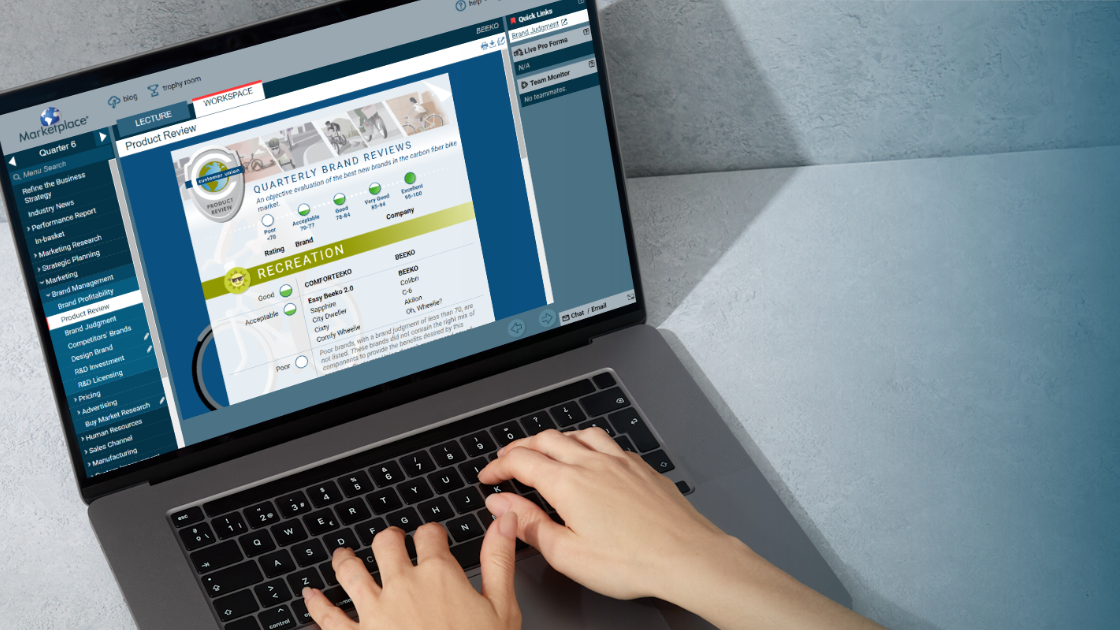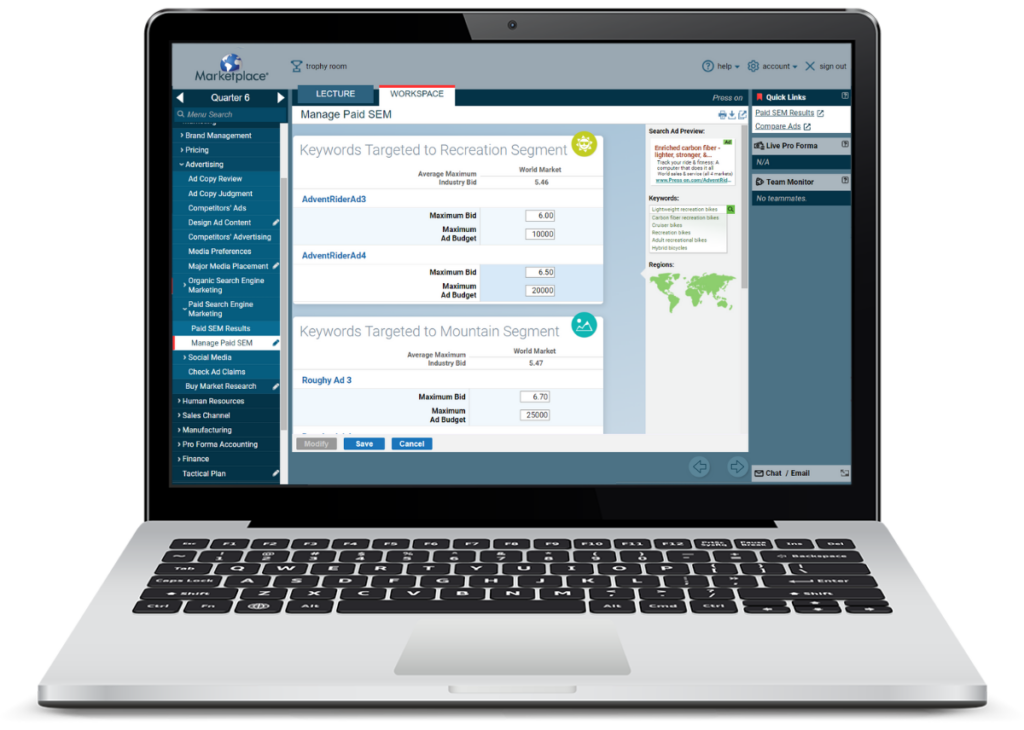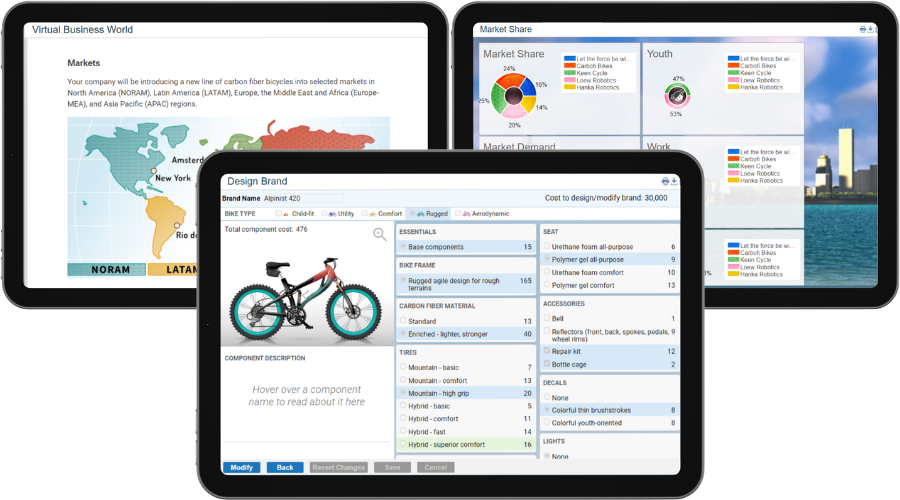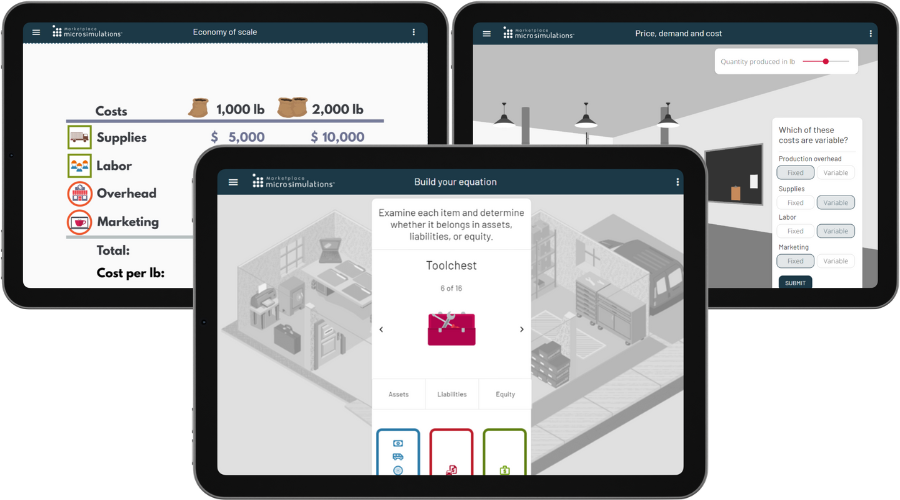
Business Simulations: What You Need to Know
Business simulations have become a popular way to give students practical learning experience in an immersive environment. Rather than simply reading about business theory, students take on the real challenges of building their own business.
But what exactly is a business simulation? And how do you use one in your class? We’re going to explore these and other questions to show you a new way of teaching.
What Is a Business Simulation?
A business simulation is an immersive learning experience that mimics real life. It lets students make business decisions and experience consequences in a risk-free environment. Players engage in most business simulations online, competing against classmates or a computer opponent. They task students with either starting a business or helping an existing business reach certain goals.

Business simulations can focus on a variety of functions. For example, Marketplace Simulations has business games for entrepreneurship, marketing, supply chain management, societal impact management, and more. Each one presents students with challenges central to the business category.

What are the Benefits of Business Simulations?
Business simulations come with a long list of benefits, including experiential learning, leadership development, knowledge retention and more.

Experiential Learning. Business simulations bring theory to life. Students step into executive roles, implementing business strategies and adapting to real-time results.

Holistic Understanding. Cross-functional simulations show students how all disciplines must work together for success. Students learn to consider their decisions from every angle.

Engaged Students. Learning becomes a necessity as students work to outsmart their classmates. Students will eagerly spend hours perfecting their simulation strategies.

Responsible Decision-Making. Students strengthen their business acumen as they make strategic decisions that will grow or diminish their market share, profits, and reputation.

Knowledge Retention. Business theory is easier to remember when we understand how it works in the real world. Students remember more when they actively apply what you’ve taught them.

Leadership Development. Students must work as a team to win their market. They learn to strategize, communicate, and lead effectively as they navigate a shared path to success.

Lively Class Discussions. Playing a business simulation as a class is like building your own case study. Class discussions will take on new importance as students pull from their new experiences.
Learn more about why professors use business simulations.
What Types of Business Simulations are Available?
Business simulation games can vary by format, subject, length of time, and whether students compete against an opponent. On one end, full-enterprise simulations put students in charge of an entire business. They last anywhere from 2 hours to an entire semester. On the opposite end, Microsimulations take about 20 minutes and focus on one core business concept.
Every type of business simulation has its own advantages. When choosing a simulation, start by determining your classes goals, needs, and time available.
Competitive Business Simulations
Nothing sparks learning like a little competition. Students play against each other or a computer as they build a new business. These simulations provide a realistic learning experience, mimicking real-world market conditions. Students may oversee a single department or play across functions to understand how all disciplines work together.

Explore Competitive Business Simulations
Microsimulations

Microsimulations provide bite-sized instruction and practice right when students need it. Based on microlearning science, each game focuses on a core business concept. Students play on their own and can play as many times as they want. Each simulation takes just 10 to 25 minutes to complete.
How Realistic Are Business Simulations?
When it comes to realism, not all business games are created equal. Some are designed less to educate and more to inspire. With that in mind, these games may include unrealistic features to enhance fun and help players get out of tight spots quickly.
On the other end of the spectrum, serious business games are highly realistic. Marketplace Simulations is a premier example in this category. These business games are grounded in business theory, with realistic scenarios, economic patterns, and market responses.
These simulations can be just as fun as simple games, but they require a deeper level of effort. Students must understand key business principles and build management skills to succeed. Getting out of a tight spot requires assessing market opportunities and making wise strategic decisions.
One of the most realistic business simulations available is Marketplace’s International Corporate Management with Real-Time Economic Conditions. This MBA-level simulation uses real exchange rates, economic conditions, and industry news. Students can also hedge and make speculative investments in response to real-life economic uncertainties.
How to Use a Business Simulation in Class
Business simulations are most commonly assigned as out-of-class work. Instructors will often plan lectures and class discussions to complement the tasks students are taking on in the business. This strategy increases student engagement as they listen for theories and insights to help them in the simulation.
Other professors will use one class period as a lab. Students come to the class at their regularly scheduled time and work on the simulation with their teams. This lab time gives the instructor insight into how each team is working together and allows students to ask questions as they work. The instructor then uses the remaining class periods for standard teaching methods.
Read how one professor structured simulation coursework in his class.
Finally, some professors will implement a flipped classroom model. The professor provides instructional materials for the student to interact with outside of class while bringing questions into it. Marketplace Microsimulations work well for this model by offering focused teaching and practice on one business concept at a time.
Business Games for Every Discipline

Got questions? Need help structuring your class? Talk with our support team seven days a week!









